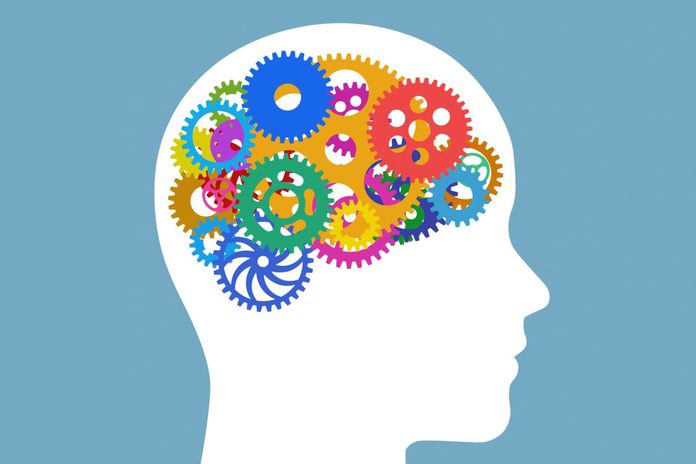What Therapists Think About Neuro-Linguistic Programming for Mental Health

Neuro-linguistic programming focuses on changing your thoughts to improve your mental health. But can you really banish anxiety, fear, and stress by controlling your thoughts?
We’re all stressed—and the Covid-19 pandemic has only exacerbated the current mental health crisis. Is it any wonder so many people are turning to self-help books, personal development, and therapy?
“Going to therapy was the No. 1 New Year’s resolution in America,” says Roseann Capanna-Hodge, a Connecticut-based licensed professional counselor and board certified neurofeedback provider, citing findings from the American Psychological Association’s survey, Stress in America 2020.
But what if you could fix your anxiety, increase your chance of success, or improve your reactions to stress by changing your mindset? One psychological theory, neuro-linguistic programming (NLP), promises that and more.
However, some have called NLP a pseudoscience. And it doesn’t have the strong research to back it up like treatments such as cognitive behavioural therapy, which focuses on identifying and changing thoughts and behaviours that are affecting mental health.
(Related: This Unexpected Technique Can Help Control Anxiety)
What is NLP?
Neuro-linguistic programming was first established in the 1970s by linguist John Grinder and Richard Bandler, a mathematician and information scientist. It gained traction in pop culture as a way to control your mind and influence others by mimicking the communication and thought patterns of successful people.
In a therapeutic setting, NLP is used to help individuals change “perceptions, behaviour, and communication” and develop a positive mindset that will help them reach their goals, according to Capanna-Hodge.
Leah Rockwell, licensed professional counselor and founder of Rockwell Wellness Counseling, adds that NLP is “not something that is widely taught in counseling graduate programs.”
She says therapists interested in NLP seek out additional training, explaining that there are other types of therapy developed to treat similar issues that have more research-backed evidence at this time.
(Related: What Is Toxic Positivity? Here’s Why It Can Be Negative)
Common neuro-linguistic programming techniques
NLP practitioners use a variety of communication and visualization techniques, including:
- Anchoring: Training your mind to trigger certain emotions when seeing or sensing an external object or sensation. For example, if you press a spot on your hand or look at an image when you feel happy, you might be able to change future emotions by pressing that spot or looking at the image.
- Rapport: Mimicking speech patterns or physical behaviours of others to strengthen a communication bond.
- Visual/kinesthetic dissociation: A thought exercise that involves re-processing a past event from a detached, dissociated viewpoint.
“Perception is sort of the anchor to NLP,” Capanna-Hodge explains.
In other words, NLP recognizes that even if two people have the exact same experience, they might interpret it differently.
NLP techniques are meant to help people learn to control their perceptions, and thus their interpretations and reactions to situations.
(Related: 9 Lessons from Yale University’s Popular Course on Happiness)
Why seek out NLP?
According to the iNLP Center, a training hub for NLP practitioners, people are drawn to the philosophy and its techniques for a variety of reasons:
- Learning to read nonverbal cues, including eye movements
- Regaining control of thoughts and feelings
- Managing anxiety
- Overcoming a phobia
- Improving public speaking, leadership, or communication skills
- Fixing undesirable behaviours and actions in themselves and those around them
Capanna-Hodge says it’s used widely by coaches and leadership professionals.
It has also been utilized by some trained therapists for helping to treat generalized anxiety disorder, depression, and post-traumatic stress disorder (PTSD).
The difference between NLP and traditional therapy
Capanna-Hodge says traditional psychotherapy typically digs into the past for solutions, while NLP focuses on setting goals for the future.
She says this forward-thinking perspective is what makes NLP popular among life coaches and personal development leaders.
However, Rockwell says, “Contrary to popular thought, therapy is based in all temporal dimensions—past, present, and future. If a therapist is drawing only from your past experiences, [they’re] missing out on some crucial stuff.”
Most therapists, including Capanna-Hodge and Rockwell, use a combination of techniques.
Rockwell’s approaches are usually rooted in cognitive behaviour therapy and narrative therapy. “Similar to what I understand NLP to ascribe to, narrative therapy allows clients to ‘re-story’ their experiences so that they are empowered to view future experiences as manageable,” Rockwell says.
Simply put, it helps you reframe negative thought patterns so you can better tackle them in the future.
(Related: How To Find the Right BIPOC Therapist for You)
NLP: brilliant or bunk?
The jury’s still out on how effective NLP is. “Talk therapy and medications are king in mental health even though other things, like NLP or EMDR [eye movement desensitization and reprocessing], have research too,” Capanna-Hodge says.
NLP has been less widely studied than cognitive behavioural therapy or even mental health medications. On one hand, this could mean its effectiveness is underrated.
On the other hand, it could be that researchers don’t deem it promising enough to spend time and money assessing it.
What the research says
In its 2014 report on NLP, the Canadian Agency for Drugs and Technologies in Health reviewed seven studies but found no proof for NLP’s effectiveness against depression, anxiety, or PTSD in adults.
However, a 2015 review of 12 small studies published in Psychiatria Danubina suggested otherwise. The review concluded that NLP “can hold its ground in comparison with other psychotherapeutic methods.”
Research from 2009 and 2012 produced mixed results, too. The former indicated that NLP participants experienced better quality of life for up to five months after their therapy sessions, while the latter, a review of 10 studies, suggested NLP has little effect on clinical conditions at all.
Keep in mind: studies that show NLP’s effectiveness tend to be very small. More robust research is needed to confirm their findings.
Could NLP be helpful for you?
Capanna-Hodge believes neuro-linguistic programming is just one of many helpful tools for developing a positive mindset.
“If you feel like something’s holding you back, diving into NLP is something that I’d recommend. It lends itself to positivism. But more than that, it’s broken down and feels manageable,” she says. “That’s not to say that traditional psychotherapies can’t be helpful.”
From talk therapy to cognitive behavioural therapy, the field of psychology is full of research-backed methods for breaking negative thought patterns, alleviating depression and anxiety, and improving quality of life.
“The therapist may or may not use NLP techniques,” Capanna-Hodge says. “When you have a psychological issue or trauma, you need trauma-based therapy.”
(Related: Covid Couples Therapy—Expert Tips on How to Talk About the Tough Stuff)
When to see a professional
Taking a neuro-linguistic programming course or reading a book about NLP techniques might be helpful if you’re looking for a practical guide to reaching your goals.
But if daily life and work feel like a constant struggle, Capanna-Hodge says it’s time to seek out professional mental health services.
“Nobody ever regrets getting therapy,” she says. “It’s always a good thing. If you think you need therapy, you need it.”
The final word
Neuro-linguistic programming (NLP) uses visualization and other self-regulation techniques to help you gain control of your mind—and consequently, your actions.
Psychologists such as Capanna-Hodge say it can help people identify and change unhelpful thoughts and communication patterns.
Still, research on NLP’s effectiveness is limited. Rockwell recommends seeking out therapy techniques supported by more data—cognitive behavioural therapy, for example, which is also helpful for changing negative thought patterns.
“Neuro-linguistic programming isn’t for everybody. No therapy is for everybody,” says Capanna-Hodge. It’s important to seek the type of therapy that will meet your mental and emotional needs.
Next: How Rumination and Obsessive Thoughts Are Linked to Anxiety and Depression




